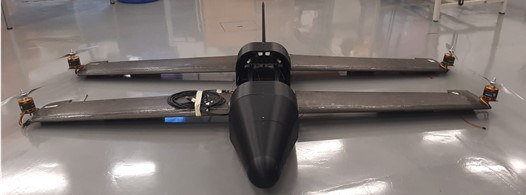The AcoComm project (Acoustic Communication in Dispersive Waveguides for Structural Health Monitoring Applications) is funded by the German Research Foundation. Grant number: 349435502 (funding period: September 2017 – August 2019), project budget: 173.600 EUR.
Project description:
In recent years, ultrasonic Guided Waves (GWs) received a considerable attention from the nondestructive testing (NDT) and structural health monitoring (SHM) community because of the GW ability to travel long distances without substantial attenuation as well as to their versatile multimode/frequency nature that allows for defect detection, localization and characterization. GWs are usually excited and sensed through multiple piezo-electric transducers arranged in different array configurations. The primary objective of the AcoComm-proposal is the exploration of data-communication in dispersive elastic waveguides with homogeneous and heterogeneous properties. A particular challenge is the multimode/frequency nature of guided waves. This represents a challenge for signal interpretation and information retrieval. The unique approach of AcoComm reveals novel opportunities for autonomous and maintenance-free sensor network architectures with synchronous and asynchronous communication schemes. This is particular beneficial in structural health monitoring (SHM) scenarios with permanently installed sensor nodes, because additional cabling and energy-demanding RF-communication can be avoided. But such a wireless communication link is also important for locations that have a poor radio frequency penetration. AcoComm, for the first time, aims at an integrated dual mode system that combines acoustic communication with GW-based SHM, where the transmitted data originate from the sensor node itself, i.e. the information about damage in form of the damage indicator. This proposal initially targets data communication in planar isotropic structures and planar composite structures. Moreover, data communication in a network of piezoelectric transducers with parallel excitation is a totally novel approach. The wave propagation is studied by means of the finite element method and validated with experimental measurements at the Goethe University of Frankfurt and the University of Bologna (Italy). Moreover, the bit-error-rate will be quantified in terms of its sensitivity to dispersion. The communication performance is also studied in the presence of a material defect which generates additional reflections and which potentially alters the bit-error-rate. This potentially can lead to novel damage detection opportunities as soon as the quality of data communication deteriorates.
More information: Link


